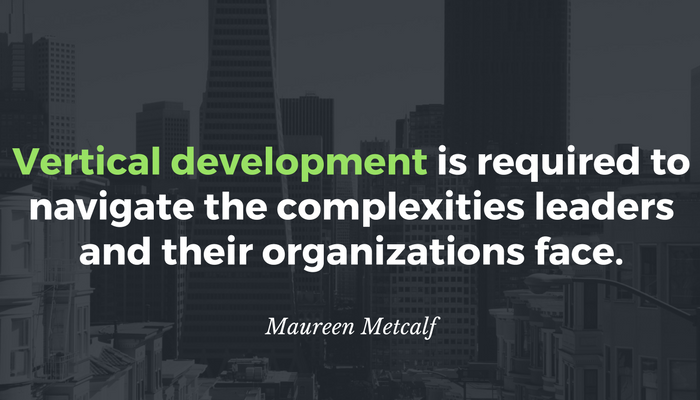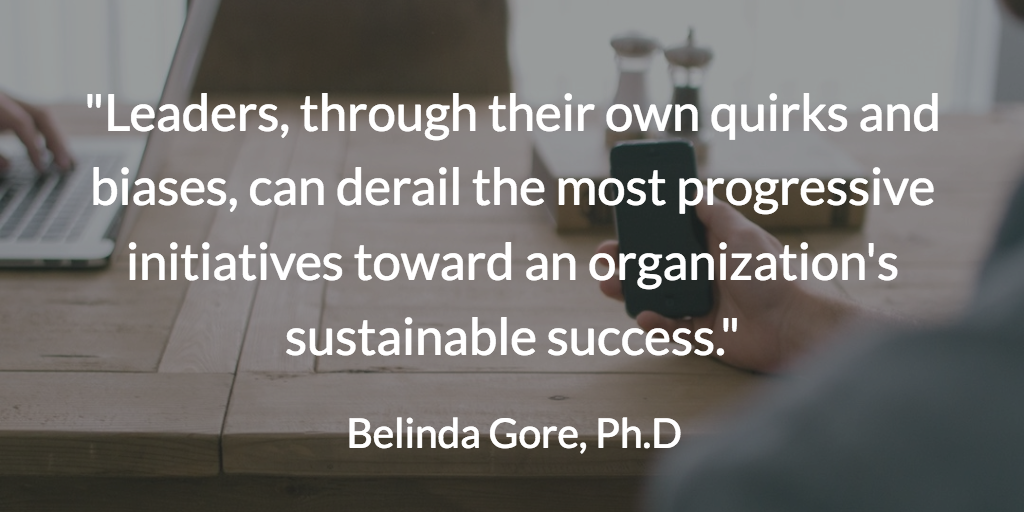Proven Path to Leadership Maturity and Effectiveness
 This post is a companion to the podcast featuring Mike Morrow-Fox talking about leadership maturity and vertical development to build the leadership qualities required to lead large, complex organizations and those that aspire to make the greatest impact.
This post is a companion to the podcast featuring Mike Morrow-Fox talking about leadership maturity and vertical development to build the leadership qualities required to lead large, complex organizations and those that aspire to make the greatest impact.
Forbes Coaches Council first published the following article in August 2016.
Future trends indicate complexity, accelerated change, and near-constant uncertainty in the coming years. These conditions will require significantly different leadership skills.
With these new demands for evolving leadership, is there a predictable path to develop leadership? If so, what does that path look like?
Leaders develop both “horizontally,” increasing their ability at their current level of operation, and “vertically,” increasing their level of complexity, emotional maturity, and opening to new awareness. Many researchers are now saying that “vertical development” is required to navigate the complexities leaders and their organizations face.
To answer what the vertical evolutionary path looks like, I reference the research of Dr. Cook-Greuter, who developed a Leadership Maturity Framework (LMF) and measurement of adult development as part of her doctoral dissertation at Harvard University. Dr. Cook-Greuter is now the Co-Founder with Beena Sharma of The Center for Leadership Maturity, a firm that facilitates vertical development in individuals, teams, and organizations. The LMF is the basis of my work with vertical leadership development because it provides a model grounded in research and is practical to use in coaching and leadership development.
Vertical development does not mean that more developed people are “better” people, but rather, in many cases, they are likely to be more effective in key leadership roles within large complex organizations. The following is a summary of the LMF describing the predictable developmental trajectory people navigate as they grow:
The Group-Centric Level
This level is about conforming and belonging. People at this level follow rules, norms and observe hierarchy. They conform to social expectations, work to group standards, seek membership and approval, and appreciate outward signs of status as a sign of approval. They attend to the welfare of their own group; those who are not like them are the “other,” and therefore outside their circle of concern. They avoid conflict, think in simple terms, and often speak in generalities. Feedback is taken as disapproval since their driving value is to gain approval and be included.
Example: This is the employee who looks to what the group is doing to determine his actions. He looks to meet the “expectations” set by the organization, fit into the culture, and do what everyone does. Belonging is his key to success; standing out or having a different opinion feels risky
The Skill-Centric Level
This focuses on comparing self to others and perfecting skills. Individuals at this level focus on being competent in their own area of interest and improving techniques and efficiency. They aspire to quality standards and are often heavily invested in their way as the only way of doing things. Decisions are made based on incontrovertible “facts.” Given their focus on problem-solving and detail, they can get caught in the weeds and not see the big picture necessary to effectively prioritize among competing demands. All consuming attention on being right can lead them to be critical of and competitive with others. They hear feedback about their work as criticism of them as a whole person.
Example: This is the employee who points out when others make mistakes and tries to correct them so they can meet the standards. Her development efforts focus on building expertise. She usually has a “better” opinion unless she is in the presence of a subject-matter expert.
The Self-Determining Level
This focuses on analyzing and achieving to effectively deliver results. Leaders at this level look toward longer-term goals and initiate rather than follow expectations. They value objectivity and scientific knowledge, seeking rational, proactive ways around problems. They often seek consensus — “agree to disagree” — and value mutuality and equality in relationships. They accept feedback to promote learning and success.
Example: This employee continually drives to meet organizational goals. He works both efficiently and effectively and is continually competing with himself and others to drive the best results. He has a five-year plan, is open to new learning, and is beginning to be more reflective.
The Self-Questioning Level
This level focuses on self in relationship and contextualizing his/her experience. Leaders at this level are concerned with the difference between reality and appearance and have an increased understanding of complexity and unintended effects of actions. They begin to question their own assumptions and views and realize the subjectivity of beliefs; and talk of interpretations rather than facts. They can play different roles in different contexts and begin to seek out and value feedback.
Example: This employee is continually inquiring, challenging assumptions, and aware of the limitations of conventional thinking. She focuses on creating an environment where everyone feels valued. She is committed to appreciating value in different perspectives.
The Self-Actualizing Level
This level is about integrating and transforming self and systems, and recognizing higher principles, complexity and interrelationships. People at this level are aware of the social construction of reality — not just rules and customs. They are problem finding, not just doing creative problem solving. They are aware of paradox and contradiction in self and systems and learn to have a deep appreciation of others. They demonstrate a sensitivity to systemic change and create “positive-sum” games.
Example: This person is continually evaluating the organization’s strategy against long-term industry trends as well as global economic conditions while embodying her values and using herself as an instrument of transformation. She is self-aware and firmly anchored in principles while having the ability to adapt based on context.
As we look to the changes leaders are facing in the near and long term, it is helpful to have a robust model for development that allows them to focus their development energy effectively. This framework, along with it, measurement instrument — the maturity assessment for professionals (MAP) — is the most robust I have seen, and I find it highly effective in supporting leaders.
About the author Maureen Metcalf, CEO and Founder of Innovative Leadership Institute, is a renowned executive advisor, author, speaker, and coach whose 30 years of business experience provides high-impact, practical solutions that support her clients’ leadership development and organizational transformations. Maureen is recognized as an innovative, principled thought leader who combines intellectual rigor and discipline with an ability to translate theory into practice. Her operational skills are coupled with a strategic ability to analyze, develop, and implement successful profitability, growth, and sustainability strategies.

